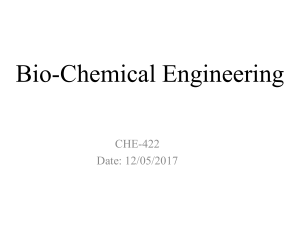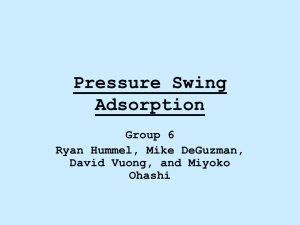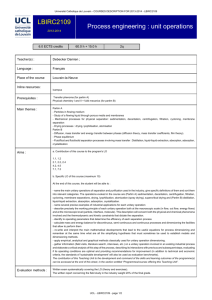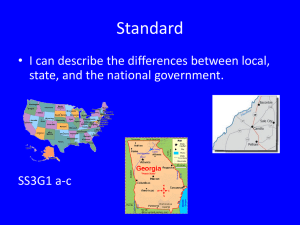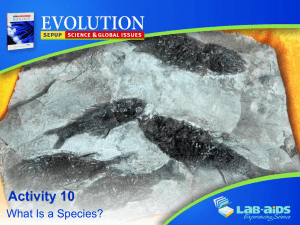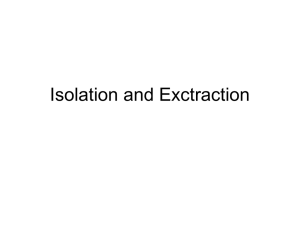Principles of Chemical Separations with Environmental Applications
advertisement
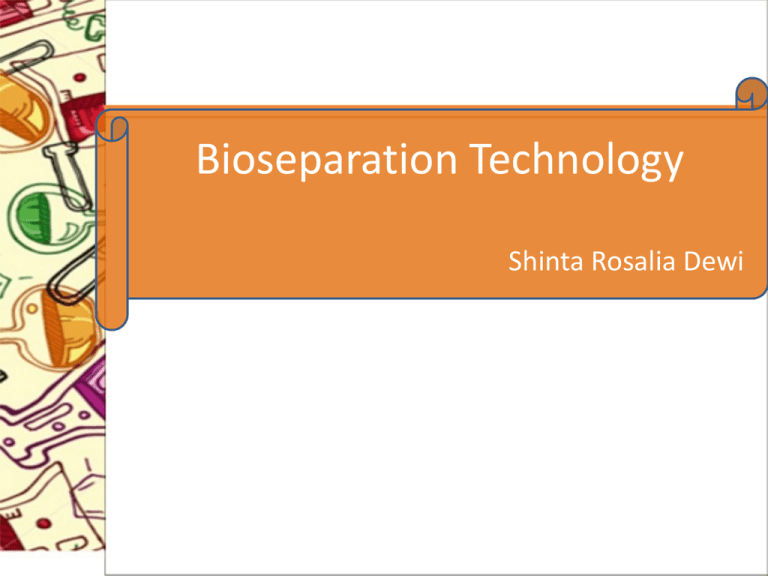
Bioseparation Technology Shinta Rosalia Dewi Penilaian MLF WAN SRD Praktikum 100% Ujian : 60% Tugas (paper/presentasi/kuis) : 40% Reference • J. D. Seader and Ernest J. Henley, 2006, Separation Process Principles Second Edition, John Wiley & Sons, Inc. • Raja ghosh, 2006, Principles Of Bioseparations Engineering, World Scientific Publishing Co. Pte. Ltd • Richard D. Noble and Patricia A. Terry, 2004, Principles of Chemical Separations with Environmental Applications, Cambridge University Press • Earle R.L and Earle, M.D, Unit Operations in Food Processing Bioseparation engineering the large-scale separation and purification of biological products : biopharmaceuticals, biochemicals, foods, diagnostic reagents, etc Why ? Processing Bioseparation Waste treatment Application Separation Basic of separation • • • • • • • • Size: e.g. filtration, membrane separation, centrifugation Density: e.g. centrifugation, sedimentation Diffusivity: e.g. membrane separation Shape: e.g. centrifugation, filtration, sedimentation Polarity: e.g. extraction, chromatography, adsorption Solubility: e.g. extraction, precipitation, crystallization Electrostatic charge: e.g. adsorption, membrane separation, ion exchange Volatility: e.g. distillation, evaporation Coagulation-FlocculationSedimentation-Filtration • Coagulation : the process in which dispersed colloidal particles agglomerate. • Flocculation : the process where in colloids come out of suspension in the form of floc or flakes by the addition of a clarifying agent • Sedimentation/settling : the process of letting suspended material settle by gravity. • Filtration is the process of removing suspended solids from water by passing the water through a permeable fabric or porous bed of materials Membrane separation • A membrane is a thin semi-permeable barrier which can be used for separation : particle-liquid, particle-solute, solute-solvent, solute-solute separation • Driving force : solute size, electrostatic charge, diffusivity, solute shape • A membrane may be made from organic polymers or inorganic material such as glass, metals and ceramics, or even liquids. Centrifugation • Separates particles from suspensions, macromolecules from solutions • Driving force : Size and density • Centrifugation efficiency : large particle diameter, large density • Ultracentrifuge higher speed (30000 rpm - 50000 rpm) separating macromolecules Precipitation • Precipitation based bioseparation essentially involves selective conversion of a specific dissolved component of a complex mixture to an insoluble form using appropriate physical or physicochemical means. • The insoluble form which is obtained as a precipitate (typically an easy to sediment solid) Precipitation (Con’t) Biological macromolecules can be precipitated by: 1. Cooling 2. pH adjustment 3. Addition of solvents (aseton) Crystallization • Crystallization is a special type of precipitation process where the solid is obtained in a crystalline form. • Driving force : solubility Extraction • Extraction : partitioning of a solute between two immiscible or partially miscible phases. • Driving force : Polarity and solubility, density • Liquid-liquid extraction • Solid-liquid extraction • Supercritical fluid extraction (SFE) • An environmental separation of acetic acid–water mixtures Adsorption and desorption • Adsorption : the binding of molecules on the surface of solid material • Solid material is called the adsorbent, the molecule that binds on the adsorbent is adsorbate. • The release of adsorbed material from an adsorbent is called desorption • Driving force size and shape, polarity, electrostatic charge • Removal of water Silica gel, zeolites, membrane Adsorption … (Con’t) Absorption and stripping • Absorption is the process the binding of molecules into the bulk of absorben • Stripping (or desorption) is the release of absorbate (solute) from absorben • Environmental the removal of ammonia gas from an air stream with water as the mass-separating agent. Absorption … (Con’t) Ion exchange • Ion exchange is very similar to adsorption; both processes involve mass transfer from a fluid to a solid phase. • Ion exchange is based on electrostatic interactions between the molecule and the ion exchanger. • Cation exchange adsorbent is negatively charged and can therefore bind positively charged molecules. • Anion exchange adsorbent is positively charged and can bind negatively charged molecules Chromatography • Chromatography is a solute fractionation technique which relies on the dynamic distribution of molecules to be separated between two phases: a stationary (or binding) phase and a mobile (or carrier) phase. • Stationary phase: Phase that stays in place inside the column • Mobile phase: Solvent moving through the column. • Driving force : polarity Chromatography (Con’t) Distillation • Distillation separates components of a liquid mixture based on their different boiling points. • Driving force : temperature Evaporation • Evaporation is to vaporize most of the water from a solution containing a desired product • The final product of evaporation is a concentrated liquid, not a solid • Driving force : temperature Drying • Drying is a mass transfer process consisting of the removal of water or another solvent from a solid, semi-solid or liquid. • The final product is solid. • Driving force : temperature Food Technology : Sugar Production

